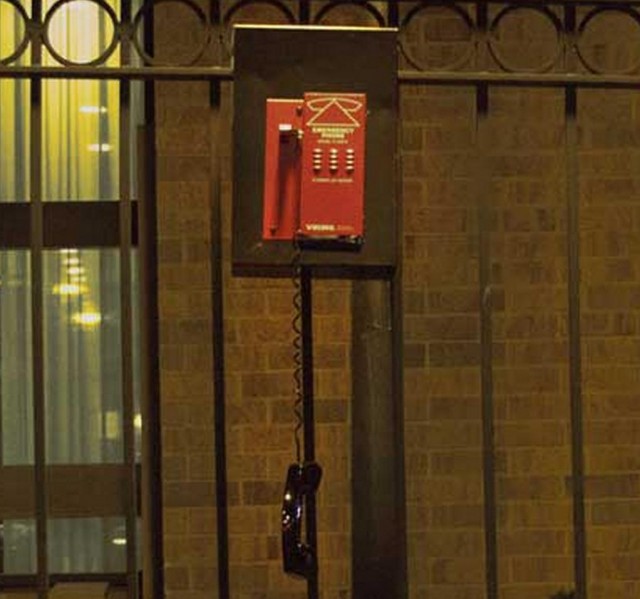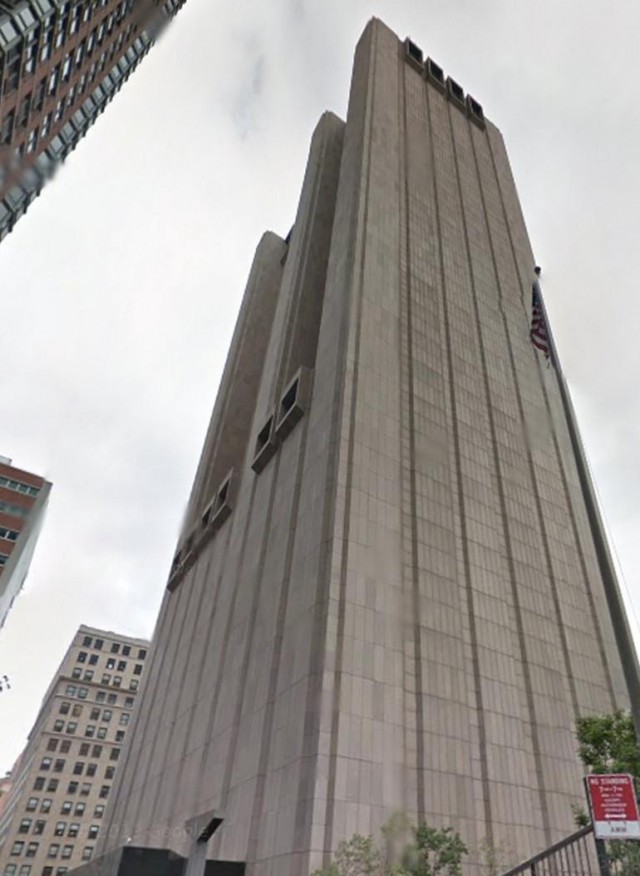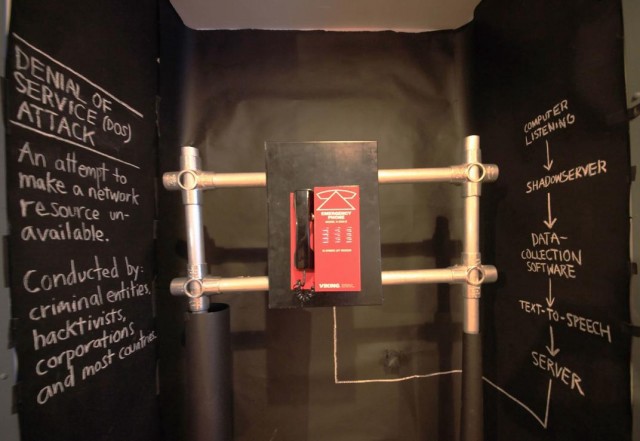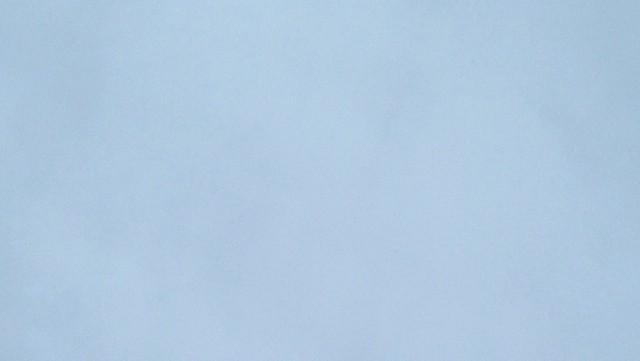Meet The Awl
by The Awl
For the past five years, we’ve operated this website in a public beta. We’ve been working out some of the implementation. Next month, around the time of our fifth anniversary, The Awl will finally launch. (April 20th is our anniversary, if you’re thinking of gifts. Hold on to your 4/20 jokes, though, we are full up.) We have gathered some data and done some user testing and think we’re ready for this big step.

FAQ
Who will run The Awl?
The Awl will be run by John Herrman, currently of BuzzFeeᴅ, and Matt Buchanan, currently of the New Yorker. We’ll introduce them in more detail down the road, but they’re really lovely, thoughtful, curious and smart — and also they’re total weirdos.
Wait a minute, I Googled, and they’re, like, tech bloggers? They both worked at Gizmodo! I don’t… What?
After careful consideration and an in-depth analysis of where the market is moving, we’re iterating toward an all-Samsung news format. The tractional synergies of this pivot are just too good to pass up. Love you, Samsung!
(For the suspicious: that’s a joke. Not the Samsung part, we totally do love Samsung. But there will be no tech blog here.)
No, but seriously, will the site continue with its tradition of publishing longform writing, criticism, poetry, reporting and commentary by radical lesbians, witty frat bros and feminists, women and men of color, crazed gay dudes, and also emerging and already emerged writers of all ages, classes and backgrounds, even sometimes the faintly somewhat conservative? Will it remain a place for thoughtful, intelligent observation and unexpected points of view? Will it retain its commitment to never wasting your time and never treating you like an idiot, or, even worse, a number?
Yes.
Will the original two, what’s-their-faces, still write on The Awl?
Yes, Alex Balk and Choire Sicha will absolutely continue to write here, when not attending to matters of finance or corporate planning or whatever founders do all day.* Like, getting writer checks out faster, for one thing. But they’ll actually do better writing work once they have real editors focused on running a real site. It is way past time that there was someone in charge around here who actually went to college.
What about the quick, tiny fun stuff? Internet etiquette, self-mocking listicles, bear videos? What about BEAR VIDEOS?
Think of it this way: If you actually like The Awl, the things you like about it will get better. If you are cool to The Awl, the things that put you off will get likely better or even go away. Choire and Alex are tired, broken men who have taken this thing as far as it can go. An injection of fresh young blood can only help the whole project grow and change in the best ways.
Hey, wasn’t there a third one when you started out?
Good memory! David Cho is currently the publisher of Grantland. John Shankman has been The Awl’s publisher for the last two years. He’s really excited about this launch and its “positive implications for building the brand.” Hashtag business. Hashtag crushingit.
Who really owns The Awl and its other publications? I heard it was some stealth VC guy who made his money from spellcaster spam.
The Awl is entirely owned by the people who work here. That is also true at our other publications. We have taken exactly zero dollars in seed or investment money. We’ve let a couple of people buy us lunch though. If you want to buy us lunch, it’s partners@theawl.com.
Hey, where does The Awl live, anyway?
The Awl lives burrowed within the beating hearts of everyone who looks at the Internet and still sees the dream of a better world buried deep down below, but in a more concrete sense we are currently in lease negotiations for a new office in Downtown Brooklyn, or DoBro, as they apparently call it.
Hahaha, they call it that?
Not really, not yet they don’t. It could happen though. Say it out loud. Now remind yourself how stupid “DUMBO” sounded at first, and then think about the last time someone told you to meet them in Dumbo and you actually gave it a second thought. (How stupid the name sounds, I mean, not actually going to Dumbo, which, let’s face it, is a huge drag.) Laugh at DoBro now, but when you’re coming to see us at the office in a little bit, that’s where you’ll be telling people you’re heading.
The Awl’s current aesthetic has been referred to as “garbage,” “visually offensive,” “a giant pile of stinking refuse” and “uggo.” That whole anti-design element was cute at first, but it has been five years, how long are you going to keep that up? Reading you on mobile makes me want to claw out my eyes with my keys. It’s like you’re actually trying to drive readers away.
Okay, well, harsh, but also you are not wrong. Good news: The site is going to work better, for sure. For the last nine months or so, Awl head of technology Dusty Matthews (late of Vox and, before that, Curbed) has been rebuilding things from the bottom up. (Remember how we used to crash all the time? Remember how our page load was laughable?) That process now proceeds to the front. So there’ll be changes, yes. There might be a bit of radical change even, but we won’t make it suddenly all like “Wait, where am I?” It’ll be more like, “Huh, why don’t my eyes hate me and themselves anymore?” We’d link to Dusty’s Twitter, but he deleted it. (Tempting, right? Think about how much better your life would be with no Twitter. You could actually make a website look appealing, for instance.)
I don’t know what I think of this.
Change is always scary but that never keeps it from happening anyway. Here’s the thing: It’s an adventure! It’ll be fun! Nobody knows how it will turn out! And even if it’s a total disaster, remember this (and it’s a maxim with considerably broader implications, so maybe write it down): It’s just the Internet. Seriously. It’s just the Internet.
The New Orleans Mardi Gras Playlist
Happy Mardi Gras! While you watch the joy unfold down in New Orleans, listen to this:
Remember, don’t be alarmed tomorrow when you see people walking around with ash on their foreheads. It’s a thing.
161 Years Later, A Correction Appended
“An article on Jan. 20, 1853, recounting the story of Solomon Northup, whose memoir ’12 Years a Slave’ became a movie 160 years later that won the best picture Oscar at the 86th Academy Awards on Sunday night, misspelled his surname as Northrop. And the headline misspelled it as Northrup. The errors came to light on Monday after a Twitter user pointed out the article in The Times archives. (The errors notwithstanding, The Times described the article as’a more complete and authentic record than has yet appeared.’)”
The Internet Terror Phone

Walk down Broadway, past Canal, past banks and furniture stores, Mr. Fashion and sneaker shops and condos, old then new, brick then steel, until the buildings grow taller and begin to take up entire blocks. Turn right at the unopened Pret, across from the McDonald’s, down Thomas Street, a one-way single-lane. Look up. You can’t miss it: A monolith, brutalist, granite armored, its skeleton colossal slats of moulded concrete. It is said to feature the largest blank facade in the world. The building’s six turrets contain air ducts, a whole mess of ventilation for whatever is inside. Whatever is inside — that’s the question.
There are no windows, there are barely any signs. The only notable notice reads “no standing except authorized vehicles.” The website Above Top Secret has a thread about the building, and the sign. “The agency permitted to park there is AWM. I have never heard of an agency called AWM, and no matter how I goggle [sic] it, nothing comes up,” someone offers. Another suggests that AWM might stand for “autonomous warfare mainframe” or “atomic weapons management.” More likely, the thread concludes, AWM is the name of some unknown, secret a security contractor.

The building at 33 Thomas is full of secrets. It was built for AT&T; Long Lines, the name for the company’s long-distance network. The lines were (still are) literally long, crossing ranges and nations and laid out across the ocean floor. Where the lines converge, like they do here in lower Manhattan, there is an exchange point. The building was, perhaps still is, one such point, acting as a gigantic switchboard, where voices carried over coaxial cables moved between floors before exiting on a new line, over to New Jersey or the Atlantic Ocean and parts beyond. Each floor is supposedly 18 feet high, each square foot able to hold 250 pounds, and the walls were designed to withstand a nuclear blast.
Andrew Blum, who wrote a very good book about the internet called Tubes, said he has no idea what’s inside the building. He spent two weeks trying to get in. Whatever is in there, he said, is not the Internet, because the building is sealed off, no fiber optic tubes flow into it. At least, not from nearby. And very nearby are major hubs, one at 375 Pearl (the Verizon building) and another on 60 Hudson (the old Western Union headquarters), which are two of the most important pieces of pure Internet real estate in the northeast. No, the monolith is most likely a telco hotel, where companies rent space and house their equipment. AT&T;’s name is still decalled on the doors. The security guard at the front desk will tell you, cryptically, that it’s full of telecom stuff. Switchboards? “Yeah… switchboards.” But there is so much space. The building is 550 feet tall. What’s taking up all that space inside those granite, blast-proof walls?
Few walk down the lane but those that do are on their way somewhere, and do not stop and ponder the structure. Wait long enough and a few tourists might happen upon it, lean back, gawk, and snap a photo before moving on. One or two might comment on its ugliness, even though the building was praised, in the New York Times, in 1982, for being “the only one of the several windowless equipment buildings the phone company has built that makes any sense architecturally.” Ponder the monolith and its innards long enough, however, and you might find inspiration. This is how a trio of grad students at NYU’s ITP (Interactive Telecommunications Program) came to build a strange new kind of emergency phonebooth.
“We fell in love with the building,” said Omer Shapira, a filmmaker and journalist. “It’s just so insanely big, and dark, and what it contains no one knows. There are no blueprints online. Maybe there are NSA servers in there.” Shapira said that they first did their pondering before anyone knew who Edward Snowden was, and before cybercrime was something normal people might talk about. He and his partners, Max Ma and Ryan Bartley, wanted to find a way to link that building, full of phone lines, to its surroundings, full of Internet. “How about if we make this phone that shows the emergencies on the Internet,” Bartley said. “It would be like there’s this enormous building screaming for help.”
First they needed to find a way to listen in on cyberattacks. This wasn’t difficult. Shapira said that the internet is a lot like a big echo chamber — efficient routing means redundant connections. Denial-of-service (DoS) attacks reverberate between the connections. They needed a way to tap into a connection and listen for echoes. This wasn’t easy.

“Well, no one, big companies I mean, wanted to partner with us, to let us see how they were being attacked. I guess we shouldn’t have been surprised,” Shapira said. So they found databases of DoS attacks. The only problem with the databases is they weren’t in real time. Nonetheless, the range and frequency was astonishing. “The ones you hear about, from Anonymous usually, those are the most vanilla attacks, like on Scientology. You don’t hear about criminal organizations or governments, controlling millions of computers through a botnet to gain access to a server, or kill it,” Shapira said.
When he first looked at the attack logs, Bartley said: “Oh my God, this was way, way bigger than we ever thought.”
They buffered the logs by a few days, mostly so the three of them, or ITP, or NYU, wouldn’t become a target for the attackers. Then they programmed a cheap, credit-card-sized computer called a Raspberry Pi to scrape this data and spit it out. They turned the text to speech, choosing a crackly computer voice. “The feeling we want to give,” Bartley said, “is like, whenever you see a zombie movie, and the radio is replaying a message, a distress signal, that’s it.”
They housed the computer in a metal box — red, of course — and connected a telephone handset. They made it battery powered, so it could be anywhere, and talked about somehow putting it up onto or next to the building before running away. Shapira is from Israel and Ma is from China. They weren’t sure the ramifications of putting an art project phone booth on a mysterious building that might house equipment used by government spy agencies, but nothing good would come of it. They’d lose the phone, at least. Probably worse.
After asking around, they recently got permission to put the phone up somewhere outside, in public, in Williamsburg, which they plan on doing this summer. So the booth is getting weatherproofed, though it might not ever be where it’s really meant to go. Still, walk down Broadway on nearly any cold night this winter, past the cast iron storefronts on Thomas, and stare up at the monolith for a spell. The wind comes howling through the narrow lane, and if you lean back and stare up and listen enough you might just hear it: the sound of a great windowless tower, screaming with ancient emergencies.
Ryan Bradley is a writer and editor in New York.
New York City, March 2, 2014

★ Overlaid on the all-day gray of the sky was a diffuse and nonspecific discoloration, like an old bruise. The toddler spotted the snow first, toward day’s end. Fine flakes began blowing down at an angle, and something even less visible was falling among them at an angle closer to plumb. And then even as the threat seemed to be coming true, it subsided. Out in the fading light, the continuing snow was too fine to see, a prickling on the forehead. The bread supply at the Fairway was intact; the aisles were relatively calm. On the way back, the snow was weaker still. The dread of winter was near exhausted. As the kale splattered in the pan, it was impossible to summon the will to take off and protect the sweater.
The Israeli Vegan's Dilemma
“Vegans and veg-lovers may want to boycott the West Bank, but can’t resist its organic produce, which is the best produced in Israel.”
Eagulls, "Possessed"
What the world needs now is more songs like this one but — as an aging white man who is desperately clinging to anything that even vaguely reminds him of the music of his youth and briefly helps him recall a time in his life when he still felt energy and danger rather than torpor and disappointment plus did I mention I am like super super white — that is almost certainly what you would expect me to say; you may have a different opinion. [Via]
Terrible Thing Made More Awful
Lately when I have been laying awake in bed as dawn comes on and wishing there were some way it would all simply cease I have shifted my final fantasy from a giant sheet of ice that freezes me forever to an asteroid that appears without warning and suddenly puts an end to everything (I blame Elizabeth Kolbert for putting this beautiful dream in my head). Unfortunately, one cannot sustain thoughts of personal extinction forever; the mind tends to drift, and this morning my reverie of eradication was interrupted by my brain’s inexplicable decision to focus on the subject of email, specifically, why does it suck so bad? I read somewhere recently, I can’t remember where, that they were working on a new way to structure email; whereas now it is an interaction that demands the semblance of a conversation, in the future it would be more like a social media platform, i.e. instead of having to open and respond to a specific missive you could “heart” or “RT” or whatever to indicate receipt without having to get into a whole discussion about the subject in question. WHERE IS THAT FUTURE, I ask you, because ohmyGod does the present suck so bad. I hate email. It jacks up my already dangerously-elevated levels of anxiety and sits in the box, taunting me, demanding acknowledgment, never satisfied with even the most supplicating of yeses given to put an end to the conversation. Ugh it’s so bad. Anyway, you know what would be even worse? This.
What To Do When You Pass Out In Hot Yoga
by Matthew J.X. Malady
People drop things on the Internet and run all the time. So we have to ask. In this edition, writer and graduate student Jane Hu tells us more about an especially destructive session of hot yoga she recently experienced.
How Fainting At Hot Yoga Made Me Reevaluate My Life
— Jane Hu (@hujane) February 14, 2014
Jane! So what happened here?
A little over two years ago, I bought a yoga mat. Sort of as a New Year’s resolution thing: “This year I’m really going to discover yoga!” My friend had taken me along to some of her hot yoga classes, and unlike ordinary yoga, it at least felt like something was happening to my body. (This is almost 100 percent because I don’t know how to do yoga, overheated room or not.) Well, I’ve used the yoga mat exactly two times. Once was just at the end of 2011; the other was Valentine’s Day.
Five minutes into the hour-long session, and I was close to blacking out. I did what they tell you to do: Get into child’s pose until you’re ready to join the group again. I got into child’s pose and, almost seamlessly, transitioned into lying on my back. While my instructor’s soothing voice took everyone else through the motions, I was lying on my back FREAKING OUT. Am I blacking out? No, no, I don’t think I’m going to black out. Wow, I don’t remember hot yoga being this hard? But maybe this is why I only do yoga once every other year? If I leave now, would it be super disruptive? Everyone seems so calm. Though I did manage to fumble my way through the hour (with lots of child’s pose!), the physiological consequences were pretty extreme.
I got what was the equivalent of heat stroke — feeling faint and jittery for days afterward, and couldn’t really digest things for the next week. At first I thought it was just the regular Friday night treat-binge (TGIF! on top of Valentine’s Day!), but I was almost entirely confined to my bed until Monday, and even then, walking around was sort of a problem. Light-headedness would strike on the walk from the bathroom to my bedroom. I made a trip to the pharmacy and marveled at all the chewable tablets flanking Tums. But it was all sort of a haze. Really, I just felt weak all the time, even though I was doing nothing but excessive napping and eating. I was completely useless, too — even in bed, I felt nauseous and read maybe a total of 10 pages of my 24623452362453 pages of reading that entire weekend. It took just over an entire week for everything to stabilize physiologically. (Though apparently heat stroke has some potential for brain damage? Hello, readings!)
Wow. That sounds pretty scary and awful. So how *did* this debacle make you reevaluate your life? And, after all that, do you think you’ll ever go back?
It was traumatizing! Who says yoga isn’t stressful? At one point the instructor actually said to us/me, “Don’t worry if you slip; it’s just yoga.” I mean, nothing is just that thing, especially if one has to point it out. And yoga definitely isn’t just yoga.
I sort of WANT to go back, but only because I’m sort of still in disbelief about how very bad the whole experience was. To be fair, it was hard before, but it had never been quite that bad. I also turned 25 the next day. Is 25 when your body starts breaking down? Please advise.
Lesson learned (if any)?
I’m not sure what the takeaway is here. Probably that I personally shouldn’t do yoga. Um, definitely don’t try hot yoga if you haven’t done any yoga for years! Remember to stay hydrated beforehand? Push yourself, as they tell you in hot yoga, but like don’t push yourself too hard. Accept your limits! My limit is hot yoga! So I guess there are some real general life lessons to be gleaned from the whole process.
Just one more thing.
It was Valentine’s Day, and the instructor kept asking us to dedicate our practice to someone we really loved. I still can’t get over that. Is hot yoga about dedication? I mean, I still haven’t thrown away my mat.
Matthew J.X. Malady is a writer and editor in New York.
